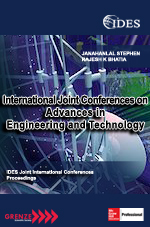A Comparative Study of Image Fusion
Conference: International Joint Conferences on Advances in Engineering and Technology
AbstractImage fusion can be used as a tool to increase the spatial resolution. In that case the high resolution panchromatic\nimagery is fused with low-resolution often multi-spectral image data. The multispectral images are images created from the\nseveral narrow spectral bands. Due to inherent limitations on board in carrying the electronics and transferring the large\nvolumes of data on to the ground, there is a requirement for finding out the methods for improving the spatial resolution by\nusing image processing techniques. Data fusion in image processing addresses such requirements. When discussion is about\ndata, it can be Optical, microwave or other sensors data. Data fusion can be further subdivided into multi-sensor fusion and\nimage data fusion. The image fusion deals with the various techniques and algorithms used for combining image data. It\ncontains all spectral (colour information) details but not spatial details. Panchromatic images are single band images\ngenerally displayed as shades of gray. It contains all high spatial details (geometric) but not spectral details. Various fusion\nalgorithms have been developed over the years. Image fusion methods can be broadly classified into two categories - spatial\ndomain and transform domain methods. All these methods improve spatial or spectral resolutions. Hence, there is a\nrequirement for development of newer techniques to fuse high resolution Cartosatseries data with high resolution of spatial\nand spectral details of all image data type. The result of image fusion is a new image that retains the most desirable\ninformation and characteristics of each input image. The main application of image fusion is merging the gray-level highresolution\npanchromatic [PAN] image and the colored low-resolution multispectral [MS] image. |
AET - 2018
|
